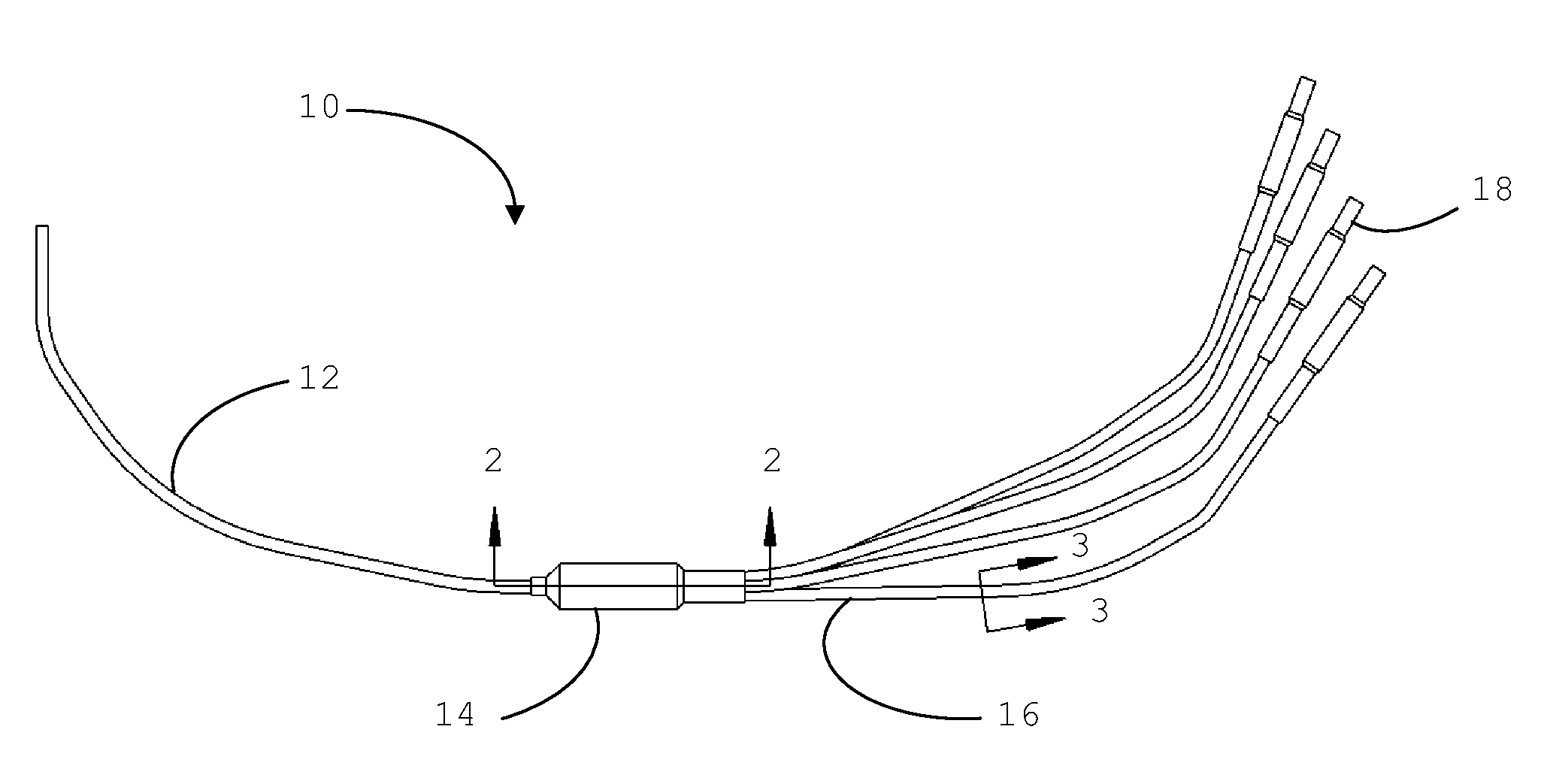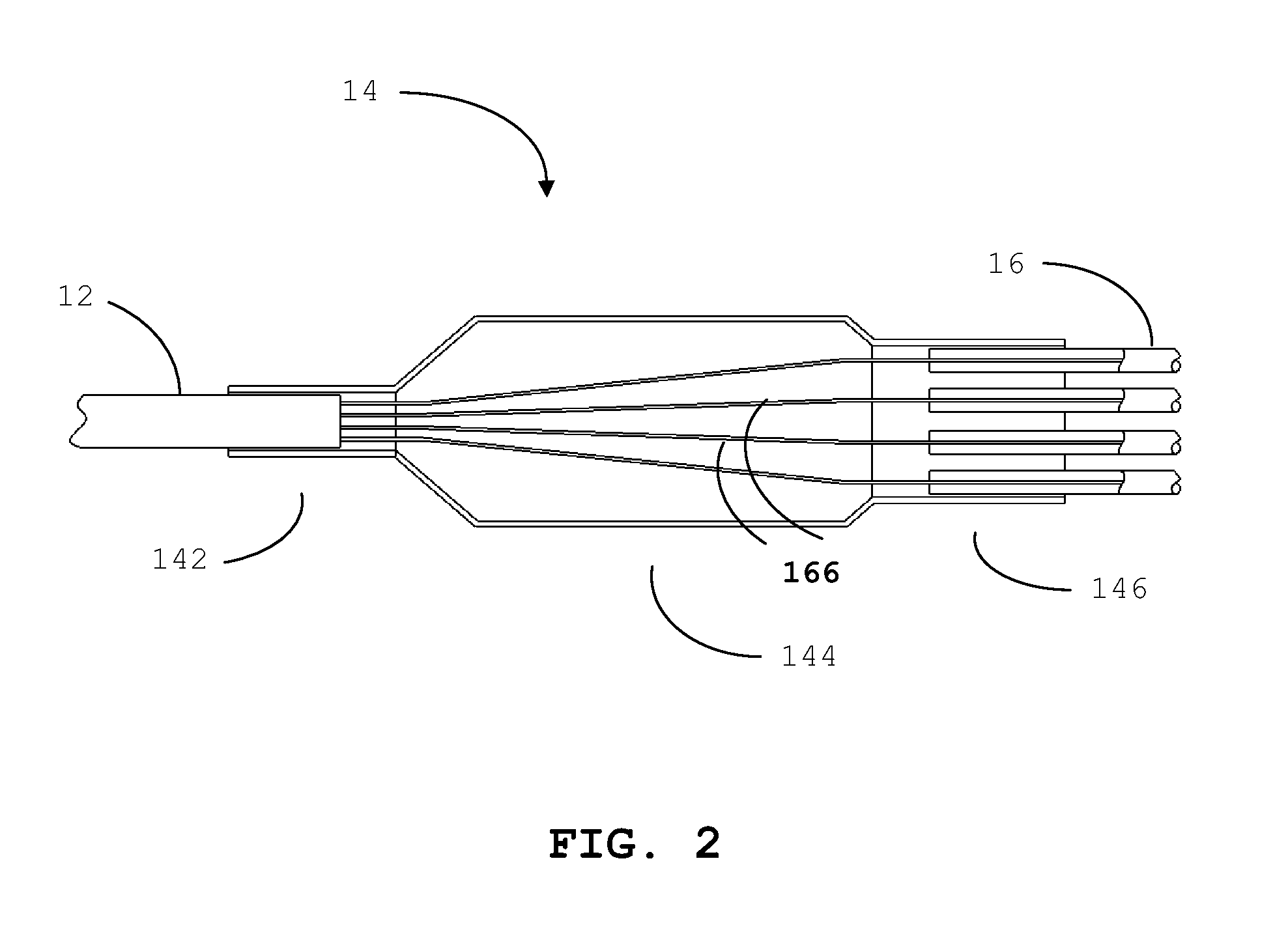Optical Fiber Cable Assembly
a technology of optical fiber cable and assembly, which is applied in the direction of optics, fibre mechanical structures, instruments, etc., can solve the problems of limited protection, little protection, and the available furcation tubes do not adequately protect the length of fiber extending from the cable, so as to reduce facilitate the handling, and protect the structure. , the effect of reducing the flexibility of the furcation leg
- Summary
- Abstract
- Description
- Claims
- Application Information
AI Technical Summary
Benefits of technology
Problems solved by technology
Method used
Image
Examples
Embodiment Construction
[0035]The present invention now will be described more fully hereinafter with reference to the accompanying drawings, in which some, but not all, embodiments of the present invention are shown. Indeed, this invention may be embodied in many different forms and should not be construed as limited to the embodiments set forth herein; rather, these embodiments are provided so that this disclosure will satisfy applicable legal requirements. Like numbers refer to like elements throughout.
[0036]The terminology used herein is for the purpose of describing particular embodiments only and is not intended to be limiting of the present invention. As used herein the term “and / or” includes any and all combinations of one or more of the associated listed items. As used herein, the singular forms “a,”“an” and “the” are intended to include the plural forms as well, unless the context clearly indicates otherwise.
[0037]Embodiments of the present invention are described herein with reference to various...
PUM
 Login to View More
Login to View More Abstract
Description
Claims
Application Information
 Login to View More
Login to View More - R&D
- Intellectual Property
- Life Sciences
- Materials
- Tech Scout
- Unparalleled Data Quality
- Higher Quality Content
- 60% Fewer Hallucinations
Browse by: Latest US Patents, China's latest patents, Technical Efficacy Thesaurus, Application Domain, Technology Topic, Popular Technical Reports.
© 2025 PatSnap. All rights reserved.Legal|Privacy policy|Modern Slavery Act Transparency Statement|Sitemap|About US| Contact US: help@patsnap.com



